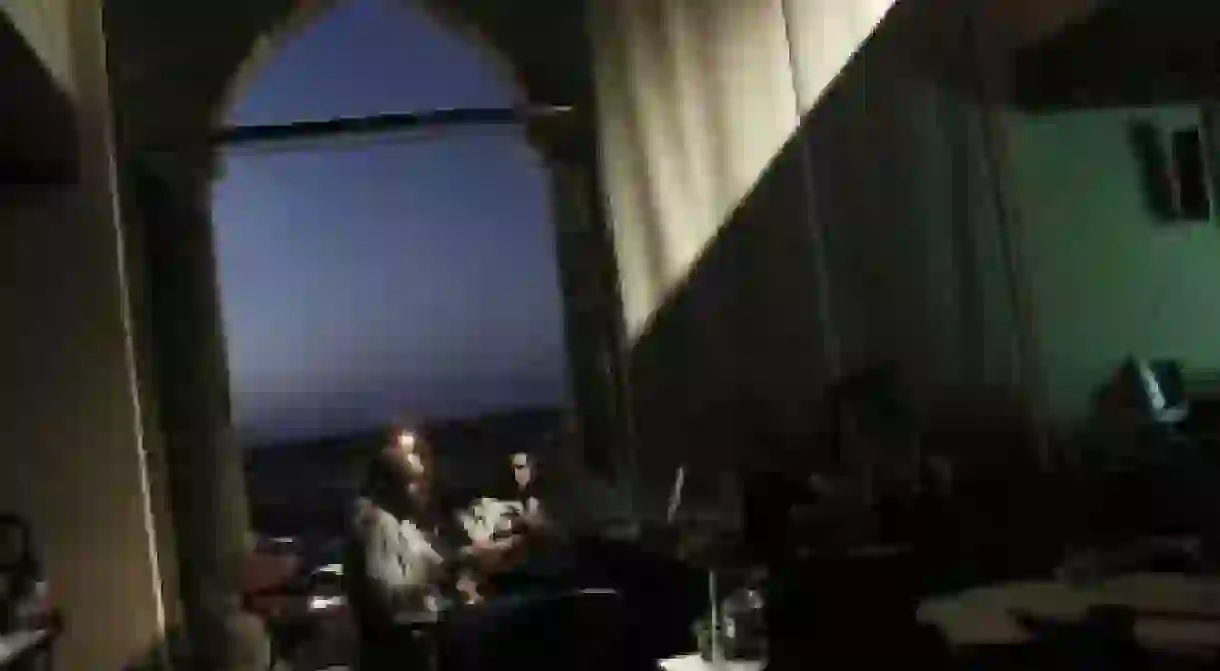Debating Greece’s Future: Contemporary Artists Interpret the Greek Crisis

Andrew Kingsford-Smith investigates the work of Jannis Kounellis and Andreas Angelidakis; two Greek artists with different approaches to the troubling financial times in their country, who both highlight the strength in common experience, and attempt to delineate a way forward.
From recession to austerity measures and riots, Greece has struggled with a succession of social and financial problems throughout the past five years. Despite this unrest, or possibly because of it, Greece’s incredible arts and culture scene is thriving and the country is producing some of the most interesting artworks in Europe. Jannis Kounellis and Andreas Angelidakis are two unique practitioners from this ancient country who have recently worked on projects inspired by the European recession. Although these two contrasting practitioners from different generations approach this vexing issue from seemingly polar perspectives, there is a common method in their work: a strong emphasis on human experience.

Jannis Kounellis
Jannis Kounellis is well known for being a prominent figure in the Arte Povera movement. This artistic philosophy started as a stance against governments, industries, cultural institutions and even questioning art itself as a private expression of the individual. It now can be seen to focus on an attempt at breaking free from hierarchical structures and the bureaucratic market. Kounellis was greatly influenced by the ideas involved in this movement, as is evident in his work, which centres on using found objects to make sculptures and locating installations in unorthodox places. One of his most famous works in 1967 featured 12 live horses that were placed in a gallery room in Rome’s L’Attico. Questioning the limits of what can be considered a ‘found object’ and breaking the conventions of galleries and art materials, Kounellis was also responding to the symbolism placed on these ‘majestic’ creatures. This work grabbed the attention of the art world and garnered him international acclaim.
In 2012, Jannis Kounellis returned to Greece to put on an exhibition at the Museum of Cycladic Art. Although not overt in its exploration of the economic troubles, Kounellis stated, ‘at this particular moment it would be impossible to have just an exhibition of art in Greece.’ In this work, Kounellis used materials found in market places and junkyards in Athens, utilising the history and stories that these items hold to enrich his sculptures. Lines of black overcoats on hooks were placed with scores of shoes and hats, but with no one to claim these very personal objects, viewers are led to think of all those without work and without income. Often referred to as visual poetry, Kounellis’ work is persistently subtle and is distanced from didacticism. Many of his works are simply called Untitled, and hence allow the viewer to draw out their own meaning. Another sculpture in this exhibition featured canvas sacks placed in a circular shape and filled with charcoal. In the middle of this circumference was an immense pile of old glasses. Although open to interpretation, this work is a prime example of the emotional power that Kounellis’s sculptures contain and their integral bond to human experience.

Andreas Angelidakis
Whilst Jannis Kounellis uses old objects to tell of the present, Andreas Angelidakis focuses on digital art forms to look to the future. Angelidakis was one of the first artists to regard the internet as a real place and through this approach he has created some fascinating works in both the cyber and real world. One such project was his Neen World, an online architectural village filled with buildings that were inspired by websites and by ‘the natural landscapes of the web.’ In this cyber town, people could walk around in their avatar’s bodies, interacting with the buildings, participating in discussions or simply just enjoying their surroundings. Angelidakis then set up a real exhibition space and filled it with life-sized versions of the buildings in Neen World, allowing people who had experienced his cyber village to re-experience it in a new way. For Angelidakis, cyber and real-life encounters are as genuine as each other.
Recently, Angelidakis has been working on an architectural and landscaping project in the town of Vasby in Sweden. Initially troubled by the tension between building development and the European landscape of debt, Angelidakis wrote, ‘if it seems like the populations of the Eurozone are hostage to a continuous exchange between banks and governments, where does that leave the citizen, and how should the architect or designer accept commissions?’ Using his theories of cyber reality, Angelidakis brought social media practises into the building industry and set the development workshops for this project in the middle of a shopping centre. This transformed the usually private meetings into a real-life social media network, where shoppers and residents were able to see and comment on the plans for development. It also allowed Angelidakis and his team to be instantly influenced by the community, and hence be able to make more informed decisions on building planning. This innovative project can be viewed on Angelidakis’ blog.
While these two practitioners’ methods seem very different, there is a common thread of thought between the two. Both artists’ practises are grounded in human experience and use real people’s stories to enrich their work. Although aesthetically unalike, the aura around found objects and the influence of whole communities both lead to the same outcome: work that speaks for large groups of people, and reveals the plight of individuals within these collectives.
By Andrew Kingsford-Smith













